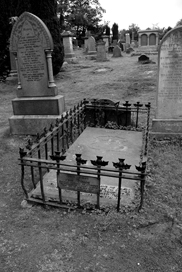John Cowane
Merchant and Benefactor
1570 – 1633
John Cowane, Stirling’s greatest benefactor was born in 1570 a contemporary of William Shakespeare and Guy Fawkes. In all probability he was born at home in what is known as John Cowane’s house in Saint Mary’s Wynd.
Little is known of what the young Cowane did in his early years. What is certain is that he would have attended the local school – all sons of the Guildry did and his father Andrew would have made sure he was a diligent pupil. His father was a merchant, burgess and indweller in Stirling and a prominent man. He and his wife supplied the Royal Palace in Stirling with goods and their premises would have been the Harrods of the day. John was in business with his father until the latters death in 1617, when, John took over all of his father’s business including running his booth or shop in what is now Broad Street.
Records also show that John Cowane was involved in more than simply selling goods in his booth. He was a sunstantial landlord in the town and was not averse to evicting non-paying tennants if the rent was not paid. He was a member of the town council and on more than one occasion Dean of the Guild, the real source of power in the burgh at that time. As Chair of the Council and Dean of the Guild, John Cowane was in a position to regulate trade and dictate who traded in the burgh – a powerful man. This was accentuated as he was also the main banker/money lender in the town.
In addition to his political activities (he was a member of the old Scots Parliment) John Cowane was heavily involved in shipping, which was always necessary for a merchant to reach the main Scots export markets of the Low Counties. He could not always rely on trading to make him rich and with empty ships he also acted as a privateer – essentially a pirate with a license.
Although John Cowane did not marry, Kirk records show he did have at least one child by a maid servant. he was fined by the session for his indescretion, which was no harship for him. The poor girl however was made to sit outside the door of the Kirk to do public penance. John’s son did not inherit his father’s business sense and had to rely on his father’s charity for the rest of his life.
John Cowane was a trader, landlord, banker, ship owner, privateer and politician but he is most remembered for his charity, the ideas for which were all devised on his death bed. He gave the funds that built and have sustained Cowane’s Trust to this day and his presense remains as his statue known locally as ‘Auld Staneybreeks’ gazes from his beloved hospital over the Holy Rude and the graveyard where he lies.

